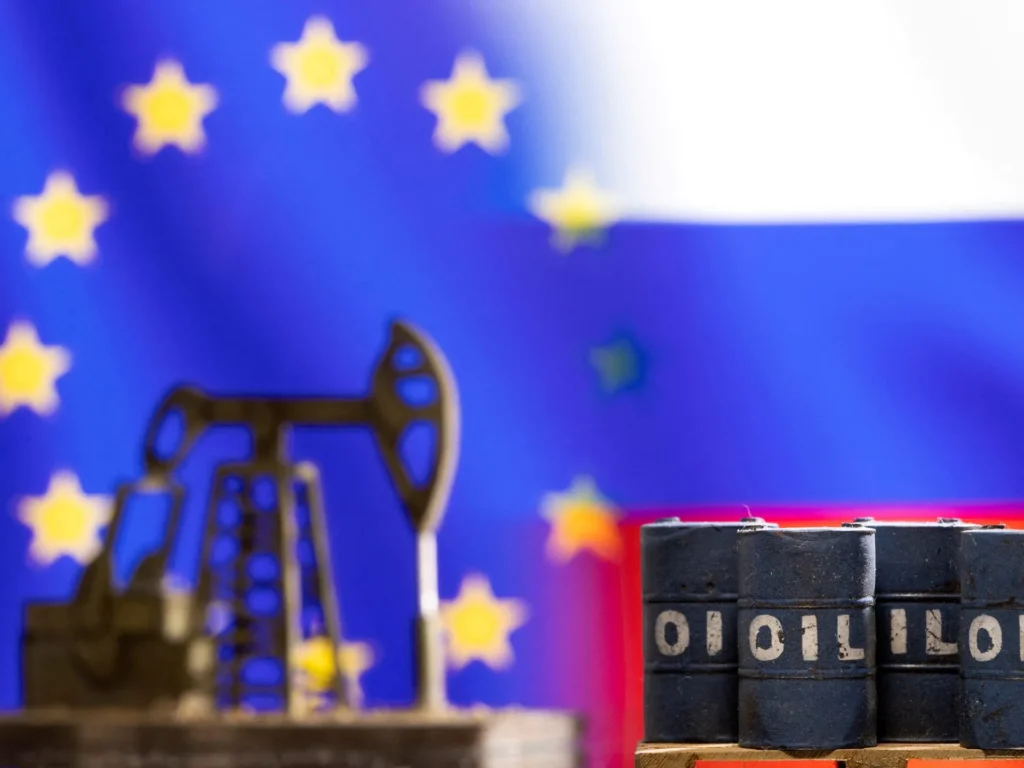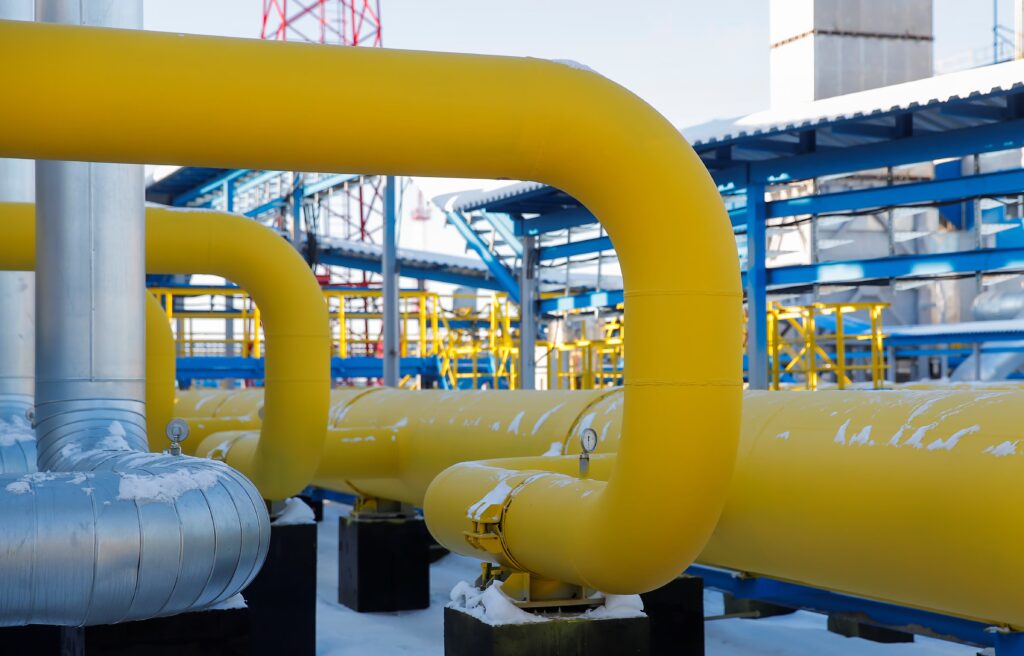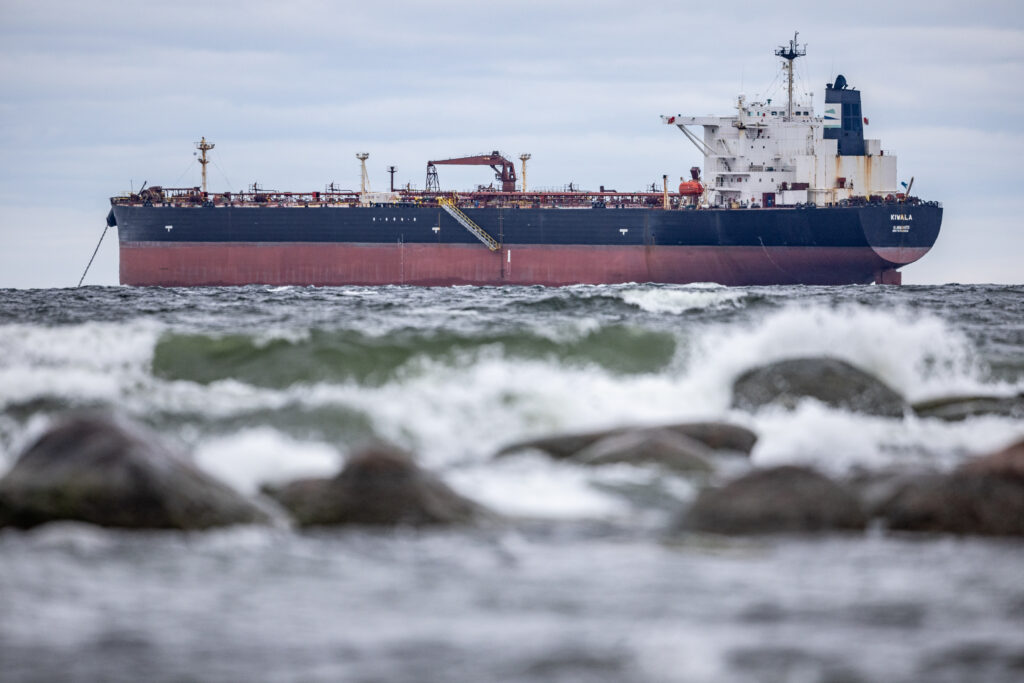If you want to understand how sanctions work at their most complex, do not start in a ministry office in Brussels. Start on a rust stained tanker that rarely docks under its true name, that turns its tracking signal on and off like a porch light, and that swaps cargo in open water far from cameras and customs. That is the world Europe is targeting with its latest sanctions push. The European Commission has rolled out a new package that goes after the money flows and shipping tricks that keep Russian oil and gas moving and the Kremlin’s budget funded. It is a plan that focuses on energy revenues, highly mobile middlemen, and a shadow fleet of aging vessels that exist to do one thing, move Russian crude and products around the rules.

This package is not about slogans. It is about tightening screws on the places where sanctions leak. The logic is straightforward. You can blacklist banks and officials. You can block exports of chips and precision tools. You can condemn missile strikes and vote through resolutions. But if oil still sails and cash still lands, Moscow adapts. So Brussels is now aiming at the arteries of revenue and the logistics capillaries that have carried crude from Baltic and Arctic ports to refineries far from Europe’s borders.
The most dramatic line of attack is the sweep against the shadow fleet. These are the anonymous workhorses of evasion. Many are older ships that changed ownership as sanctions piled up, often into webs of shell companies. They take on cargo in Russian ports, go dark to tracking, then reappear near places where ship to ship transfers are common. Cargo ends up on a different hull. Paperwork is rewritten. Insurance is reflagged. By the time the crude is delivered, the chain of custody is opaque. The new European package moves to name a large set of these vessels, not in vague terms but one by one, adding more than a hundred ships to a growing blacklist. Once a ship is listed, European service providers face bans on insuring and re insuring it. Brokers and ports are put on notice. Any port call or European sourced cover becomes high risk. The business model begins to wobble, not because the ship cannot float but because everything around it becomes more expensive and more fragile.
Europe is pairing that shipping crackdown with attention to the traders who never touch a drop of oil themselves, yet control its path. Over the past two years, a cottage industry has grown up in third countries that exist to do dealmaking and paperwork for Russian cargo. Some buy at the dock and sell to a refinery three borders away. Some act as middle layers for payment, insurance, and logistics. These intermediaries thrive because they sit outside the formal reach of the European Union, the United Kingdom, and the United States, while still relying on services that those jurisdictions dominate. The new package targets the most important part of that dependency. It points at traders, refineries, and petrochemical firms in third countries that breach sanctions and the oil price cap, with the clear stated intent to list and penalize them. If the measures land as signaled, a refinery that buys capped crude through a friendly trader may find that the trader itself becomes persona non grata, and any European touchpoint from finance to software to insurance becomes a liability.
Energy is the revenue center. That has been true since the first days of the invasion. At the start, Europe was deeply entangled in Russian pipeline gas and significant volumes of crude and refined products. Over time, volumes fell, new routes opened, and the Kremlin turned to a wider set of buyers. Price caps and maritime rules tried to choke off excess revenue by setting a ceiling that insured shipments must respect. That system always had one big weakness. It assumed compliance by the ecosystem that supports sellers and buyers. If a ship owner found an insurer in a permissive jurisdiction, or if a trader used a complex structure to hide a premium price, the cap was just a number on paper. Hence the new emphasis on enforcement. It is not enough to have rules. You have to make the game too costly to play.
Liquefied natural gas is another front. Russia’s LNG shipments became an outlet for revenue as pipeline gas to Europe collapsed. Europe cannot turn off every single LNG cargo overnight without creating its own problems, but it can clamp down on the services that allow those flows to keep growing. Earlier measures have already disrupted transshipment in European ports. The latest package builds on that and pushes toward an accelerated phaseout of direct imports. It also signals pressure on major Russian energy firms that have long enjoyed gray zone exemptions, with tougher transaction bans that will reach into the desk level work of traders and banks.
None of this lands in a political vacuum. European sanctions require agreement by all member states. That means horse trading, pressure, and the kind of quiet bargaining that never makes a headline. Some governments still receive pipeline oil or gas under legacy contracts. Others fear higher energy prices at home or retaliation against their firms abroad. The Commission’s answer is to pair sticks with levers. It is not only listing ships. It is also offering timelines and support to help vulnerable states transition. It is coordinating with G7 partners to avoid gaps. It is using access to European funds and programs to move holdouts. The road to approval still runs through twenty seven capitals, and every capital has a domestic politics of energy. That is why the details matter. Sanctions that sound sweeping on day one often end up with carve outs by day thirty. The Commission wants to lock in an approach that is hard to dilute once the package is on the table.
Ukraine’s leaders, for their part, have already welcomed the direction. They have the clarity of an economy under daily attack. Every drone that is neutralized helps, but every dollar lost to Russia’s budget helps more. Kyiv argues that if Europe closes the shipping loopholes and hits the traders who skirt the cap, the effect compounds. Freight costs for non compliant cargo rise. Insurance becomes scarce. Buyers hesitate. The discount that Russia must offer to clear barrels widens. That turns into less revenue for the state and fewer resources that can be shifted into the military. This is the long grind of sanctions. It never feels dramatic in a week. It matters over many months.
The shipping industry is already living the new reality. Crews talk about hull integrity and insurance coverage rather than geopolitics, yet the risks they face come directly from geopolitics. A tanker with a long record and reputable cover can plan port calls, repair work, and crew changes with confidence. A tanker that is part of an evasion network needs to gamble. Engines run longer between overhauls. Repairs are delayed. Ports refuse entry. Trackers go dark. Operators cut corners. That is a safety and environmental hazard as well as a legal one. One serious accident can spill crude across a coastline and blow up the economics of a smuggling chain overnight. European regulators know this. The package’s shipping measures are crafted as much around safety and liability as around the politics of the war.
Financial plumbing is another battleground. Sanctions are effective only to the extent that the financial system helps enforce them. That means banks that screen transactions, insurers that demand compliance documents, and auditors who refuse to bless suspect books. The new package tightens requirements on reinsurance for listed vessels and restricts services that enable sanctioned trades. Think of it as building a wall around the parts of the financial system that Moscow still relies on. The more airtight that wall is, the more Russia must turn to a smaller circle of permissive providers, which are costlier and less reliable. Shadow finance exists, but it is thin ice compared to the thick ice of major European institutions.
The price cap itself sits in the background of everything. Earlier measures lowered the ceiling on Russian crude to a level that was designed to cut profits while allowing volume to flow to avoid a shock to global prices. That ceiling has moved down, and the cost of shipping non compliant cargo has moved up. If the Commission’s enforcement push lands, it will change the calculus for traders who tried to live in the gray zone. A deal that looked profitable when insurance was easy and tanks were cheap becomes a tight margin bet when the ship is at risk of being listed, the insurer is on a blacklist, and the bank wants extra paperwork. Multiply that across hundreds of voyages and the economics shift.
There is a geopolitical layer that cannot be ignored. The United States has urged Europe to move faster and further on energy sanctions. Washington points to the money still flowing and argues that a real choke point strategy means taking on every part of the energy chain. Europe is not ignoring that pressure, but it is balancing it against its own energy security and political cohesion. Some member states will need time to pivot their fuel mix. Some industries still buy feedstocks that are not easily replaced in the short term. The Commission’s proposal tries to bridge that gap by targeting the most abusive practices first, while setting a clear path for deeper energy measures next year.
Russia will not stand still. As Europe tightens the routes it controls, Moscow will push cargoes to buyers that have shown a willingness to ignore Western rules. It will try to switch more trade into currencies and banks that sit outside the European and American orbit. It will grow the shadow fleet further if it can source the ships. It will look for new hubs where ship to ship transfers can take place with fewer questions asked. Some of these shifts will work for a while. Many will run into the same constraints as before. Old ships break. Insurance is only useful if a claim is paid. Banks that operate globally need access to dollars and euros. Even buyers who want cheap crude do not want legal nightmares and supply chain risks that draw attention from regulators.
What does this mean for markets. Expect freight rates for suspicious trades to rise. Expect more cargo diversion to refineries in Asia that can process a wide slate of crudes. Expect European refiners to rely more on Middle East and Atlantic Basin grades, with occasional tightness when maintenance overlaps. Expect big price moves only if the package is combined with external shocks, like supply outages or a spike in demand. Sanctions work like sand in a gearbox. They rarely blow up the machine on their own. They add friction until the machine starts to grind.
For European politics, the measure of success will be unity and follow through. The Commission can propose, but the Council must agree and national agencies must enforce. Customs officers at ports need to check documents and spot tankers that should not be there. Financial supervisors need to pressure banks that look the other way. Insurers and reinsurers need to hold the line. If one member state enforces tightly while another quietly looks aside, the shadow fleet will find the weak link. The strength of this package lies in closing those weak links.
For Ukraine, the message is that time and pressure still matter. Sanctions do not fire artillery. They do something more subtle and more durable. They limit the resources that a war economy can mobilize. They force hard trade offs inside the Kremlin’s budgets. They make it harder to maintain every program at once. If Europe sticks with the plan, the Kremlin will have to choose between paying premiums to keep the shadow fleet running, offering deeper discounts to keep exports moving, or cutting spending elsewhere. None of those choices is attractive from Moscow’s point of view.
There is also an ethical argument embedded in the maritime measures that deserves attention. The shadow fleet does not only exist to move oil. It exists to avoid standards. It avoids safety checks and maintenance. It avoids environmental rules and labor protections. It relies on obscure ownership that leaves crews exposed when things go wrong. When Europe says it will list more vessels and deny them insurance, it is also saying that it will not underwrite that kind of shipping. That is a statement about the kind of global trade system Europe wants to live in.
Look a few months ahead. If the package passes close to its current form, the list of sanctioned ships will be longer, the network of compliant insurers will be tighter, and the circle of middlemen who can operate comfortably will be smaller. Some buyers will make different choices. Some deals will die before they close. A few loud voices will say the measures did nothing because oil still sailed and prices did not jump. That is the wrong metric. The right metric is whether Russia earns less and spends more to achieve the same sales. The right metric is whether evasion is harder and riskier and less profitable.
Look a year ahead. If Europe locks in the LNG steps it has signaled and keeps lowering the room for maneuvers in shipping and finance, the revenue path for the Kremlin narrows further. Not to zero, but enough to matter. Sanctions are a marathon run through a maze of shell companies and ocean lanes. They reward patience and persistence. The latest European package reflects that reality. It is not a single blow. It is a methodical tightening of every bolt that holds the war economy together.

In the end, this is what a sanctions campaign looks like at maturity. It shifts focus from headlines to the plumbing of trade. It moves from broad statements to lists of ships, companies, and services. It spends more time on enforcement than on announcements. It is less about naming villains and more about drying up profits. Europe has chosen to go that route because it has learned from two and a half years of adaptation and evasion. The Commission is betting that if you squeeze the money and the means, the politics will follow. The next weeks will show whether all twenty seven governments are willing to make that bet together. The next months will show whether the shadow fleet can still sail through a storm of scrutiny and scarcity. And the next year will show whether the quiet war of insurance contracts, port calls, and shipping ledgers can move the ledger lines that matter most.

